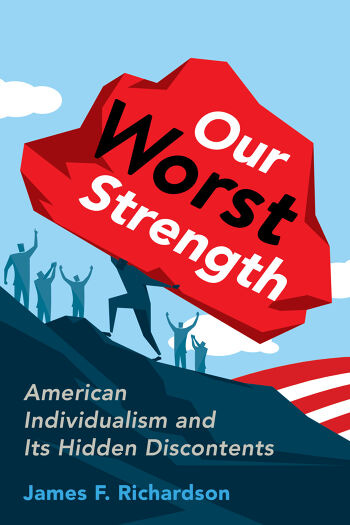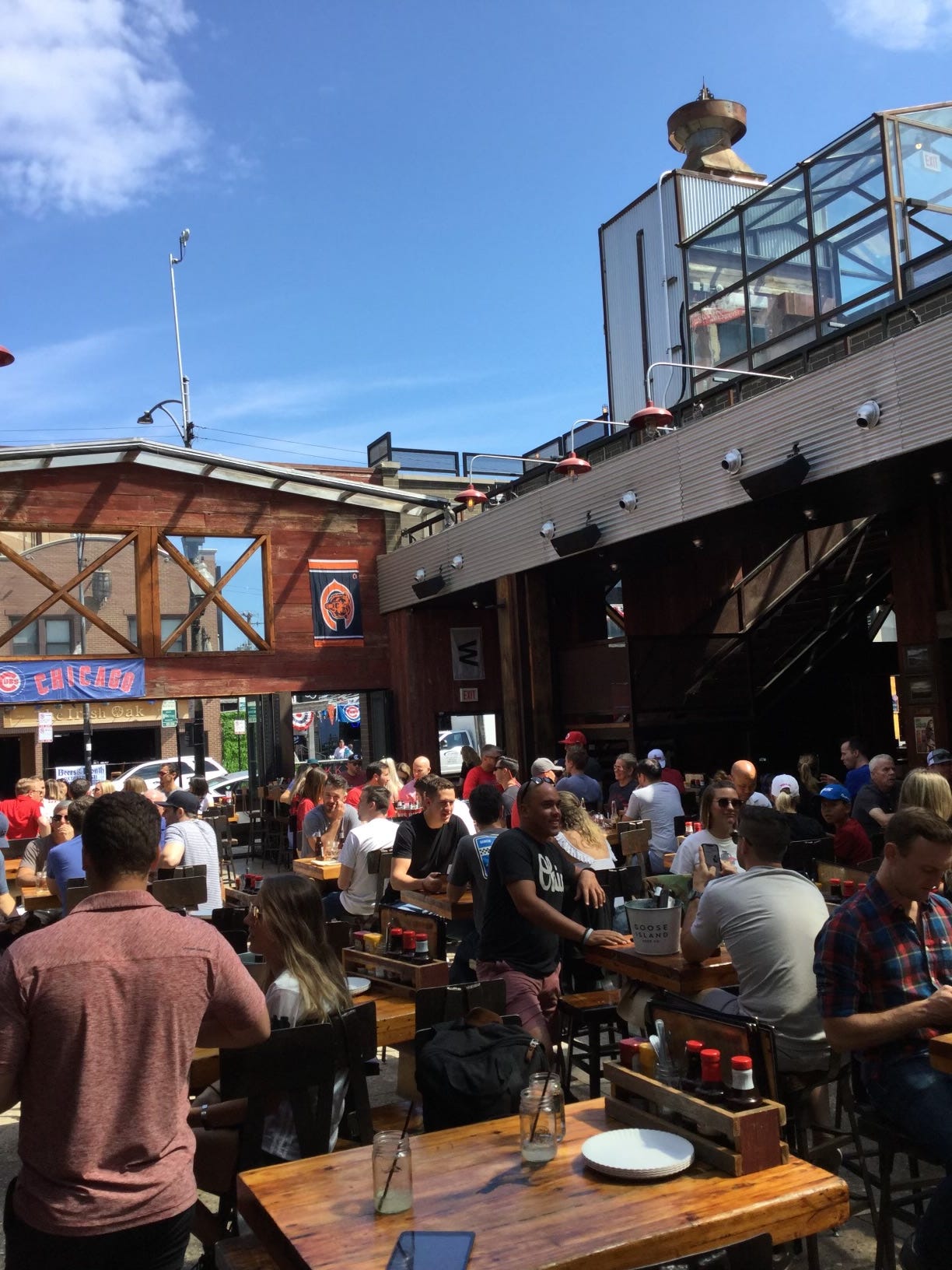Rethinking America's Obsession with Individualism
James Richardson’s Captivating New Book Set to Release May 17th


"Moving, thoughtful, and mind-expanding."
Johann Hari, best-selling author of Lost Connections and Stolen Focus
In "Our Worst Strength: American Individualism and Our Discontents," Dr. James Richardson takes readers on a profound journey through the cultural landscape of the United States, critically examining how the cherished value of individualism shapes and often distorts key aspects of American life.
With his background as a cultural anthropologist and extensive experience interviewing Americans across the country, Richardson has uniquely positioned himself to dissect the pervasive impact of individualism on the domains that dominate most of our waking hours: work, leisure, diet, social interactions, and family life.
The book is meticulously structured into seven parts, each addressing a different facet of American life under the influence of individualism. Richardson’s approach in the book is not merely descriptive but deeply analytical, employing his anthropological expertise and firsthand observations to paint a vivid picture of a society grappling with the consequences of its "radical autonomy."
In Part One, "How to Make a Hyper-Individualistic Society in Seven Easy Steps," Richardson outlines the historical and societal forces that have championed individualism as a virtue, setting the stage for the ensuing exploration. He argues that while individualism has propelled innovations and personal freedoms, it has also fostered a culture of isolation and self-centeredness that undermines communal values.
Part Two through Part Six delve into specific consequences of this cultural paradigm. For example, in "How It Became Awkward at Work," Richardson illustrates how individualistic pursuits in professional settings can lead to a competitive rather than collaborative atmosphere, reducing workplace cohesion and collective productivity. Similarly, "How We Came To Eat Whatever, Whenever" critiques the food industry’s exploitation of individualistic impulses, leading to health crises and a disconnection from communal eating practices.
Perhaps most poignantly, in "How We Shriveled the American Family," Richardson discusses the erosion of family bonds in favor of self-fulfillment, a trend that has profound implications for societal stability and emotional well-being.
Each section of his book is backed by compelling research and enriched with anecdotes from Richardson’s nationwide interviews, adding a personal dimension to the analysis.
Richardson's writing is not without hope. In the final section, "The Future of Individualism in America," he posits that individualism is not an unchangeable destiny. Instead, he advocates for a recalibration of individualistic values towards a model that emphasizes community and collective well-being. He suggests that understanding the full impact of our current trajectory is crucial before making irreversible decisions about our societal values.
"Our Worst Strength" is not simply a critique but a call to action. It challenges readers to reflect on the cost of unchecked individualism and consider more sustainable and holistic approaches to living. Richardson’s extensive fieldwork and personal anecdotes serve as powerful tools for illustrating his points, making the book not only an academic exploration but also a relatable and compelling narrative.
In the end,"Our Worst Strength" offers a thought-provoking exploration of American individualism’s deep-seated influence on contemporary life. It serves as an eye-opening social commentary that invites readers to question the sustainability of their values and practices.
Richardson's blend of research and personal insight creates a persuasive argument that individualism, while a significant part of America's identity, needs a thorough reevaluation if it is to continue serving as one of the nation's strengths rather than its greatest weakness.
🔥 In your book you lay the foundation for understanding American individualism. Could you discuss the pivotal factors or historical events that you believe most significantly propelled America toward this extreme individualism?
JR: There were many interrelated forces that brought us here. But the most important is the advent of an aspirational consumer society where we have excess cash to spend on goods and services signaling 'modernity.'
A modern consumer society began in earnest after the Civil War and expanded its reach to basically everyone by the 1950s. It goads us into chasing all things new.
The contraction of work hours is a close second, because it enabled the rise of an extreme leisure society where we have loads of time each day to sit alone and contemplate our lives and aspirations.
Thirdly, modern labor markets after World War II incentivized chasing cash wages far from home and one's mono-ethnic families and neighborhoods. This dispersal accelerated our ability to anchor ourselves in an ever-unfolding near future of consumption and lifestyle exploration (without the interference of our elders).
Described this way, the structure of our post-World War II society has unleashed the social possibility of extreme lifestyle choices, both conservative and liberal.
In fact, I think today's extremes in society are probably more extreme than at any other time in American history, in part because we abandoned the shame-based social accountability techniques that limit extreme lifestyles in most human societies.
🔥 Part two of your book delves into the awkwardness in American workplaces. How does individualism contribute to these dynamics, and can you share examples of how this has manifested in modern work settings?
JR: At first, it is hard to see the relevance of individualism as a concept. Modern work seems like the epitome of limited autonomy, especially in mid-sized to large-sized organizations. The issue that work raises for many of us is how much of one's non-work life do you share to create the trust and rapport that is necessary for healthy work environments.
Some lifestyle information could be used against you in office politics. For example, in order to ask your manager for a reduced workload due to extenuating circumstances at home, you have to trust that the information will be handled appropriately and not held against you (i.e., we never can count on James because his disabled children pre-occupy him). What if you have a horrendously premature death in the family (e.g. Covid-19) and simply need 3 months off to grieve and re-calibrate personal matters?
There aren't many employers willing to help you here at all. The problem of the individual at work is that, in a W-2- driven cash-based society, work will always have the highest priority in your life. We seek work as individuals but our circumstances are not fully respected. This individualized quest for income often pits the lone worker against their family. Again and again.
Managing one's career is the epicenter of incredible loneliness for American workers. Think about how few couples actually work in the same exact profession or industry? This lack of a common baseline makes it even harder to deal with work-life conflict, because your partner only partially understands the issues you face at work, your friends understand next to nothing.
Work pits couples against each other constantly in the daily negotiation of schedules and life. The gap between our high level of autonomy at home versus our very limited autonomy at work is the source of a lot of cognitive dissonance, stress and anxiety that exists primarily in a modern economy. The more we aspire in our leisure time, the more confining and oppressive work seems.
🔥 In your discussion in the book about how Americans "Came To Eat Whatever, Whenever," what do you see as the key cultural or societal shifts that led to our current attitudes towards food? How do you believe this reflects broader trends in American individualism?
JR: Because we prioritize work above all else, and leisure a close second, traditional food rituals fell away as people eventually could not defend the sacredness of a family dinner at home. And who will do the work of cooking consistently?
Older Americans broke with gender role traditions regarding domestic labor allowing the majority of women to work outside the home, which most do. This leaves no one clearly responsible for cooking meals. Dinner is constantly negotiated in households as a result based on individual schedules in the home.
In parallel with this de-ritualization of mealtime, the restaurant industry exploded in the 1980s and 1990s providing very easy ways to avoid cooking. Packaged food companies also piled on to make our approach to food all about convenience.
In fact, the most convenient way to approach food is to deritualize it and let everyone eat on demand with minimal preparation. It's easy to cater to individual food desires all through the day if there is no gatekeeper, no ritual and lots of super convenient food to pop in the mouth.
All of this is no more difficult than blending a smoothie or opening a box of crackers. So de-ritualizing food unleashed the modern phenomenon of on-demand snacking on whatever we desire, whenever we feel hunger pangs, often alone.
🔥 You argue in Part Five that we have turned friends into "entertainment devices." How has social media and the digital age exacerbated this trend, and what are the potential long-term impacts on our social fabric?
JR: This is a great follow-up question, since I don't dive too much into social media in the book. I think it's clear that social media is simply a modern form of mass leisure distraction, but one in which the individual can maximally curate individualized content streams, more so than what gets watched on the family TV.
We have to look at Generation Z, the first generation to grow up with all of this streaming content as totally normal, especially YouTube. My lingering concern about the trend of content curation and social media presentation of self is that it only exacerbates self-centered expectations about the public domain.
Moreover, the fact that we outsource most daily needs to larger companies and professional bureaucracies is not helping us come together every day to see and feel the social fabric in person.
A heavily digital social fabric is a zombie shadow of the real thing. Compare an Amish barn-raising to posting travel photos on Facebook. The two have almost nothing in common as social acts. The former is a village obligation. The latter is a desperate bid for validation and attention.
🔥 In the concluding part of your book, you suggest recalibrating our individualism towards a more community-oriented approach. What are some practical steps or policies you would recommend to begin this transformation in American society, especially considering the resistance that might come from such deeply ingrained values?
JR: With respect to this question, I keep coming back to three things:
1) Enhancing access to support tools like therapy for known sources of emotional distress in our individualistic society.
The demand for therapy is much higher than current usage rates. This is something we can solve as a country. We need to normalize therapy after major life traumas - failed careers, divorce, romantic break-ups, firings/layoffs, estrangement from family, lost friendships...We have more network chaos in our lives than in less individualistic societies. We need support to get through it, so we can enjoy the lifestyle autonomy it gives us.
2) Working much harder to build robust friendship networks…..….
…….that continually teach us to do things for other people, listen to their problems and compromise our daily schedules for others. Rebuilding and sustaining friendship networks will be challenging but a lot of the barriers are self-imposed and related to our way too sacred belief in everyone's privacy. The stranger's privacy should be protected. But if these are our friends, how much privacy should they be granted if we are a means of loving support. At some point, rigid privacy makes relationships beyond your immediate household either superficial or impossible. Superficial relationships don't build trust. At all. The Old Boys of yesterday's corporate America used to have meetings on the golf course for a reason. Trust.
3) Re-learning the art of group insistence/intervention when people are broken or going off the rails.
Having lived in India where group insistence is commonplace, especially in less educated parts of the country, I have seen the power of intervening as people are sliding not long after they do. Since our families are dispersed and small, it's very hard to muster 10 people to surround an alcoholic relative and get him to accept the harm he is creating.
There also aren't ten people to trade off the 'duty' of minimizing the alcoholic relative's self-harm through constant supervision. There's only one or two people available to help. This doesn't have an effect.
We also have a ridiculous belief that people should volunteer for recovery? Why? Addicts generally don't accept that they have a problem, so how long are we supposed to wait as a society? We need to figure out how to channel the seductive ritual of Disneyland to the task of nudging the broken into recovery against their will. I know we are smart enough to figure this out.
Join Us Today and Support Independent Writing
As a supporting member of "Great Books, Great Minds," you'll dive deeper into a world where your book passions thrive. For just $6 a month or $60 a year, you unlock exclusive access to a close-knit community eager to explore groundbreaking reads.
You won't just take in a book; you'll engage in meaningful conversations, connect on a more profound level with fellow book lovers, and enjoy VIP discussions with bestselling authors.
Plus, you'll receive handpicked book recommendations tailored for you. This is your chance to be at the heart of a community where literature bridges souls and authors share their secrets, all thanks to your support.
In the spirit of community, connection, and conversation, please join us today. Always stay thirsty for a great book
Diamond-Michael
Independent Journalist and Global Book Ambassador






Looking forward to reading the book when it's out.
So looking forward to this book. Excited to see it covered here in your newsletter!!!